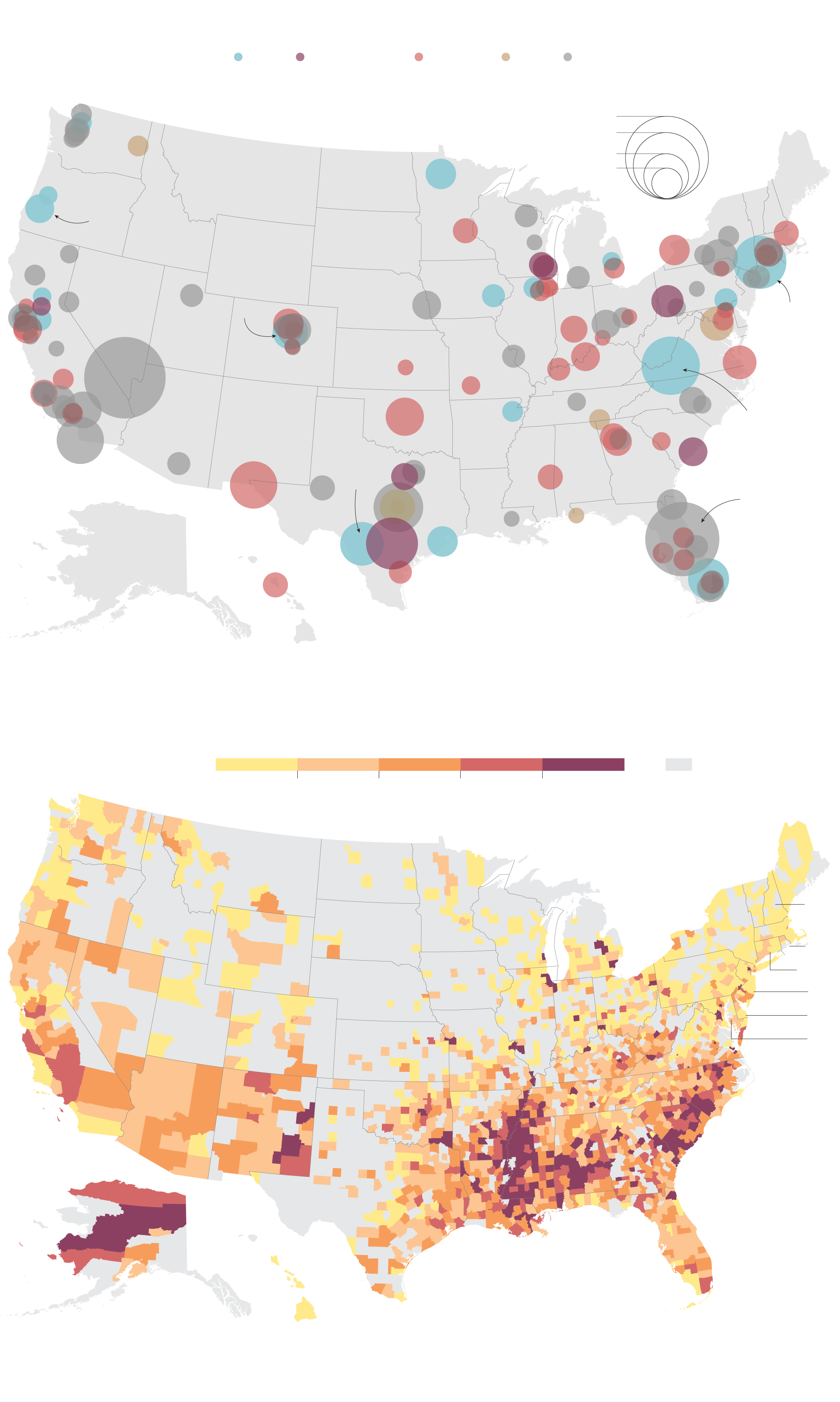[ad_1]
Mysteries go on to abound about mass shootings like the latest atrocities in Buffalo, New York and Uvalde, Texas. Chiefly, as I have beforehand mentioned, for most of its record, the United States was even a lot more awash with guns than today. However Buffalo- and Uvalde-sort shootings — the types of gun violence perpetrated by persons versus innocents fully mysterious to them – are very modern phenomena.
Yesterday, many thanks to my buddy, the political commentator Mickey Kaus, I arrived across numerous far more, in the type of a graphics characteristic from the Canadian each day, The Globe and Mail, and in particular, the mixed, and deeply bewildering, story that seems to be explained to by charts 4 and five (below).

Let us start out with the chart on the bottom, chart 5, which demonstrates U.S. “Firearm-associated homicides for each 100,000 people today, by county (2001–2020).” Regrettably, the personal state names do not present up on this reproduction, but as the unique would make distinct, the swathes of the nation with by much the most gun-similar homicides are Alaska, Mississippi, Louisiana, Alabama, and North and South Carolina. They’re the states with the most important concentrations of dim brown counties (which signify the spots with the optimum prices of this kind of gun violence), together with huge metropolitan areas like Washington, D.C., Baltimore, Detroit, and Chicago, which demonstrate up as minimal dark brown dots.
In addition, in accordance to the Giffords Law Center to Protect against Gun Violence, which is an ardent supporter of much better gun management legislation, the states talked about over have all earned failing grades in phrases of gun manage steps – besides for North Carolina, which merited a “C.”
So it’s uncomplicated to conclude that the above states are these in which it’s simplest to get a gun – and where by guns’ prevalence is most risky because they are also logically the states with the most important relative numbers of people probably to use these weapons with deadly final results.
Now, on the other hand, seem at chart four, which illustrates “Deaths in mass shootings because 1982, by site [and] style.” The greater the circle, the better the figures of fatalities that have resulted from each individual of these incidents. And what I see is that, with the (doable) exception of the Carolinas, those states with the optimum ranges of firearms homicides modified for population have endured scarcely any mass shootings of any type, and only a person mass faculty taking pictures (depicted with grayish-blue circles) – in Arkansas.
Viewed from the opposite point of view, glance at the states with the most significant concentrations of mass shootings of all kinds. They glimpse really a lot like California, Texas, Florida, and New York. Just at the rear of them are New York, Colorado, and Ga, together with the D.C. space and the Chicago place.
But likely again to the homicide chart, you can see that California, Texas, Florida, Colorado, and New York look rather tranquil on this front, with Ga standing as an exception. (It is accurate that Texas consists of significant regions of gray, exactly where no knowledge is supposedly offered. But can anyone reasonably question that if these regions ended up homicide-hefty, we would know about it?)
Even a lot more puzzling: The Gifford Centre awards an “A” on gun regulate guidelines to California, Colorado, and New York, a “C” to Florida, and the aforementioned “F” to Texas.
These and other ongoing mysteries and paradoxes more persuade me of the argument most recently innovative by Andrew R. Morral, who heads the Gun Policy in America investigate job at the RAND Corporation, a major consider tank: that “although some legal guidelines that decrease gun violence in basic may possibly also lower mass shooting” (for instance, constraints on journal potential) “It’s an unlucky simple fact that mass shootings are sufficiently uncommon that it is tricky to set up with scientific rigor no matter if insurance policies influence them….”
[ad_2]
Source link






More Stories
The Sociologic Of Political Silence: Explaining A Discourse In Jamaica’s Society
Harappan Civilizations Describe Indian Geography and Indian Politics
Politics of Coalition and Contradictions!